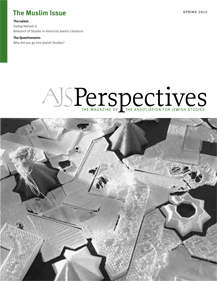Until the middle of the twentieth century, more than one million Jews lived in the Muslim world. Some of these Jewish communities were very ancient with roots in Antiquity, as in Iraq and Iran where there had been a Jewish presence since the destruction of the First Temple and Babylonian Exile. In most other Middle Eastern and North African countries, there had been Jews since Greco-Roman times, long before the Islamic conquests of the seventh century, before most of what are now the Arab countries had any Arabs, before what is now the Republic of Turkey had any Turks. Today, at the beginning of the second decade of the twenty-first century, less than fifty thousand Jews remain there. The overwhelming majority of these—more than 90 percent— are in Turkey and the Islamic Republic of Iran. The lion's share of the small, vestigial remnant in the Arab part of the Muslim world today resides in a single country: Morocco. The virtual disappearance of these large and venerable Jewish communities was not due to a Holocaust as in the case of European Jewry (although some communities in the Middle East and North Africa did actually brush up against it during World War II), but rather to a mass population movement, part of the great waves of migration that have been so important in Jewish history overall (and particularly in the past one hundred fifty years) and also part of the population displacements of the twentieth century that resulted from wars, nationalism, and ethnic conflict as well as the quest for greater economic and social opportunity.
Most of the Jews who left the Islamic countries of the Middle East, North Africa, and Central Asia remain in the same region— in Israel—where they and their descendants make up approximately half the population of the Jewish State. After Israel, the largest number settled in France, mostly from the former French colonial possessions in the Maghreb, but also in large numbers from Egypt and Lebanon, where French was the culture language of the Jewish bourgeoisie. They and their descendants make up over half of France's Jewish population. In both Israel and France, Jews from Islamic countries and their immediate descendants have had a profound impact not merely upon Jewish life, but upon the general cultural and, particularly in the case of Israel, upon the political life. Other émigré communities from the Islamic world may be found in various Western European countries, in North and South America, and in Australia. In those countries where they have settled in sufficiently substantial numbers (e.g., Moroccan Jews in Canada, Syrian and Iranian Jews in the United States, Libyan Jews in Italy, and Iraqi Jews in Britain), they have maintained a distinct communal identity into the second, third, and in the case of Syrian Jews even the fourth generation.
This important branch of the Jewish world received relatively little academic attention until the last three decades of the twentieth century. If one were to attend the annual meetings of the Association for Jewish Studies in the 1970s and 1980s (and I attended them faithfully), one would be hard pressed to find more than a single panel and perhaps an isolated paper or two imbedded within other broader thematic panels pertaining to Islamicate (to use Marshal Hodgson's useful neologism) Jewish Studies. (I am not taking into account papers on Maimonides which despite his own historical and cultural milieu, were most frequently presented within a purely general and/or Jewish philosophical context.) There would be no official Sephardi/Mizrahi Section within the AJS structure until 2002.
In the more rarified atmosphere of the American Academy for Jewish Research, the situation was slightly better. An important component of the research of a number of its small body of members was indeed devoted to the Jews of the Islamic world, but only following in the paths established by the Wissenschaft des Judentums scholars of the nineteenth century and dealing with the history, literature, and thought of the medieval period. These scholars, many of whom had come to the United States from Germany and Central Europe, would occasionally publish a postmedieval or even modern Judeo-Arabic or Judeo-Persian text, but they did so only as a philological curiosity. They took almost no interest in the early modern or contemporary history or the social scientific study of what was then called Oriental Jewry. The principal themes of postmedieval Jewish history—expulsions and migrations, Marranism, Haskala, Emancipation, anti-Semitism, religious Reform, Zionism, and the Holocaust—were all regarded as part of the Western Jewish experience. This general neglect was in keeping with the primary research interests of Judaic scholars in Europe and North America.
The 1970s witnessed the growth of social scientific interest in Jews generally, including those Jews who had left the Islamic world en masse during the twenty-five years that followed the establishment of the State of Israel and the end of European colonialism. Already in the preceding decade, there had developed a sense of urgency in Israel and France that it was necessary to launch a "salvage" operation in order to learn as much as possible about these traditional Jewish cultures before they disappeared forever in the Israeli melting pot, on the one hand, or assimilated under the allures of Gallic culture, on the other. The interest at first was primarily in ethnography and folklore and the processes of immigration, absorption, and integration. The history of these Jews in their former lands, their intellectual life, literature, and religious creativity were for the most part ignored since there was not thought to have been any noteworthy history or creative output among them since the Golden Age of the medieval period.
Not only did the Jews who emigrated from the Islamic world not assimilate to the point of disappearance but also they became subjects worthy of study in their new cultural milieu by a generation of young scholars in Israel, France, and North America. There was also a new recognition and institutional response within Israel that was partially a result of social pressures from within the society by the so-called 'edot ha-mizrah (literally, "the communities of the East"), particularly from the large and vocal Maghrebi community. Misgav Yerushalayim (the Institute for Research on the Sephardi and Oriental Heritage) at the Hebrew University, the Centre de Recherche sur les Juifs d'Afrique du Nord within the Ben-Zvi Institute, the Babylonian Jewry Heritage Center, and the Institute for Research on Zionist and Pioneer Movements in Eastern and Sephardi Communities at Yad Tabenkin were all established between 1972 and 1979. The establishment of the Office for the Integration of the Sephardi and Oriental Jewish Heritage within the Ministry of Education and Culture in 1977 channeled government funds into teaching and research at a variety of levels and gave the historical and cultural experience of Sephardi/Mizrah. i Jewry a new recognition and status within the construction of an Israeli national identity with a plurality of roots. The establishment of new research hubs was soon followed by the first large, international conferences in Israel and France and in the decades that followed in the United Kingdom, Spain, and the United States. Many of these conferences were followed by published proceedings that offered scholars a considerably expanded venue for bringing their research to light. But conference volumes reach a relatively limited audience and are occasional in nature. The appearance of the journal Pe'amim in 1979 provided a regular medium for the publication in a succinct form of the latest research aimed at a combined scholarly and educated reading public. (Pe'amim describes itself in its Hebrew subtitle as the "Quarterly for the Study of Jewish Communities of the East." "East" is taken to include everything outside of the Ashkenazi world. Originally aimed at the educated reading public as well as academics, it has evolved into a standard academic journal.) The format, scope of subject matter, and strongly interdisciplinary nature of the journal set it totally apart from every other periodical in Jewish Studies anywhere.
The expansion of institutional frameworks and the increasing scholarly encounters of the late 1970s and early 1980s, contributed to a new interdisciplinarity within the field as a whole. The number of researchers throughout the world at this time was still relatively small. There was a definite sense of enthusiasm and esprit de corps generated by its newness, and there was a strong impetus for anthropologists, historians, linguists, and comparative literature scholars to become familiar with each other's work and methodologies, and within fields there was also the sustained direct encounter of specialists working on different time periods (medieval and modern) and cultural regions (Maghreb, Mashreq, Balkans). Although "interdisciplinary" was a trendy buzzword in the academic world at that time, it was Judaic scholars generally, and scholars of Sephardi/ Mizrahi Jewry particularly, who actually practiced—and indeed still do practice— this much-preached virtue. The conscious interdisciplinarity that marked the development of the field was not merely the product of some intangible Zeitgeist, but owed a great deal to the impact of S. D. Goitein's magisterial work, A Mediterranean Society (University of California Press, 1967–1993, 6 vols.), the first volume of which appeared in 1967, and which was immediately recognized as a model of how social history as a totality might be studied. The book has influenced research on postmedieval Islamicate Jewry, and it would not be an exaggeration to say that the impact of Goitein's work on the study of Jews in the Islamic world is parallel to that of Braudel and the Annales school upon modern historical scholarship in general.
Today, Israel is far and away the leading center for historical and contemporary studies of the Jews of the Islamic world, followed by the United States and France. And although the field is and will remain small relative to the overall field of Jewish Studies in the U.S., it is no longer marginalized as it once was. One can find a fair representation of individual lectures and entire panels on Sephardi/Mizrahi themes at the AJS annual meeting. Two of the past AJS presidents and the longest-serving editor of the AJS Review have been specialists in the Islamic component of Jewish Studies, and seven of the eight editors of the recently published Encyclopedia of Jews in the Islamic World (Brill, 2010, 5 vols.) teach at American universities. Thus a "Muslim issue" of AJS Perspectives is particularly timely.


 Norman A. Stillman is the Schusterman/Josey Chair in Judaic History at the University of Oklahoma. He is executive editor of Encyclopedia of Jews in the Islamic World (Brill, 2010).
Norman A. Stillman is the Schusterman/Josey Chair in Judaic History at the University of Oklahoma. He is executive editor of Encyclopedia of Jews in the Islamic World (Brill, 2010).